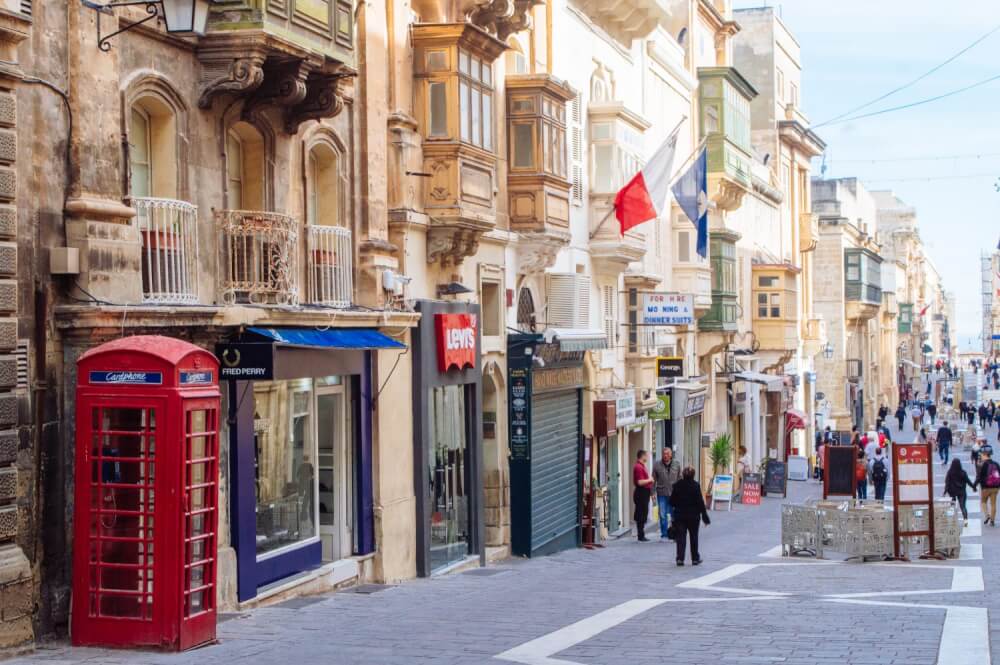On a Quest for Maltese Culture
It’s been a
busy three days. From Tuesday morning 9am until now we have been running,
driving and even swimming around Malta and its neighboring island Gozo. From visiting
art museums in Valletta to walking around the ancient Citadel of Victoria: this
week is all about ‘discovering’ as much about Maltese culture as possible.
Three days
in, one would think that I would already have a pretty good sense of the island
and its common practices and traditions. I am hesitant to admit that I am
struggling to grasp what is considered to be “truly Maltese”. Today Malta
functions as an independent state, but in the past it has been occupied by the
Romans, Byzantines, Sicilians, Spanish, French and British. Long story short: Maltese
culture has always been heavily influenced by other cultures, and traces of
these cultural interactions can still be found today.
When we
walked the streets of the sunlit Valletta on the first day, for example, I had
trouble distinguishing it from other Mediterranean towns. Although I have never
been to Malta before, the square in front of the city gates and the majestic Trition
fountain formed a very familiar sight. Similar set-ups, big squares with grotesque
multilayered fountains in the middle, can be found in for example Barcelona
(Placa Catalunya) and Lissabon (Rosso square). The big, catholic churches,
baroque architecture and narrow cobble-stone streets that characterize the
streetscape insight the gates, are also not unfamiliar to the tourist-eye that
has seen other parts of Mediterranean Europe.
The main
street of Valletta, Merchant street, is made up of mostly Western shopping chains.
There is Pull&Bear, Zara, Berschka; clothing chains that are originally
from Spain, but can now be found in most European shopping centers. The
souvenir shops are selling locally produced sun-dried tomatoes and olive oil,
and the restaurants too are serving what seems to be mostly Italian cuisine,
but sometimes with a twist: Spaghetti with rabbit, for example, is considered a
traditional Maltese dish. These cafes and restaurants are most crowded during
lunch time, when most of the shops are closed, so that its employees can have
an extensive lunch followed by a small siesta. When making these observations, a
street artist was playing “La Cucaracha” on the accordion, while Maltese women were
hanging their laundry to dry from the French balconies above my head.
On the
other hand, Malta, as a former colony of Britain, also shows some very obviously
British influences. First of all, English is (next to Maltese – but more on that
later) the official language of Malta. If you listen closely, a light British
accent can even be spotted among the English-speaking Maltesers. Moreover, the
cars on Malta drive on the left – which is still scaring me every time I step
into a bus or taxi, as I have never been to a left-driving country before. In
the streets, the British signs are almost hysterical. Fire-red phone booths and
mail boxes dominate the street corners and just like Buckingham Palace, the President’s
Palace in Valletta is guarded by Queen’s Guard-like men. With the Maltese heat,
the only obvious difference is that they are wearing slightly cooler uniforms.
These British markers attract attention among the otherwise typically
Mediterranean scenery.
 Phone booth in the streets
of Valletta
Phone booth in the streets
of Valletta
Arabic
influences are most obviously found in the Maltese language. When listening closely,
Maltese local language sounds like an Arabic dialect combined with some English
and Italian words. During the walking tour through Valletta, we learned Maltese
is a Semitic language based on Siculo-Arabic, which was first spoken on Sicily
but also on Malta under Arab rule between the 9th and 13th
century. After the Muslims were driven away from the island, the language died
out on Sicily, but further developed on Malta, which has ever since been
occupied by several European nations. This is how Maltese adopted the Latin alphabet,
while using Arabic syntax and grammar, resulting in the unique mix that it is
today.
Altogether,
Maltese culture seems to exist where Arabic and Mediterranean cultures meet. But
does this mean that Malta doesn’t have its own culture? I don’t think so. Like
we discussed during our session at the university on Tuesday: the British might
have been the ones to install the phone booths, but the island has been liberated
decades ago. It has thus been a deliberate choice to maintain them and keep them
as a part of the streetscape. Thinking of the photo booths as something British
rather than Maltese would be a projection of my own northern-European views. And
this reasoning can be applied to all of the markers of other cultures that I
have found in Malta so far. Rather than thinking of Maltese culture as
inauthentic, or even go as far as denying its existence, I should maybe try to see
the beauty in the unique mix into which Maltese culture has developed over the years.




Comments
Post a Comment